Fujitsu AOHG54LATT Handleiding
Bekijk gratis de handleiding van Fujitsu AOHG54LATT (16 pagina’s), behorend tot de categorie Airco. Deze gids werd als nuttig beoordeeld door 66 mensen en kreeg gemiddeld 4.9 sterren uit 33.5 reviews. Heb je een vraag over Fujitsu AOHG54LATT of wil je andere gebruikers van dit product iets vragen? Stel een vraag
Pagina 1/16

PART No. 9379069274-05
INSTALLATION MANUAL
OUTDOOR UNIT (3 Phase Type)
For authorized service personnel only.
INSTALLATIONSANLEITUNG
AUSSENGERÄT (3-Phasen-Typ)
Nur für autorisiertes Fachpersonal.
MANUEL D’INSTALLATION
APPAREIL EXTÉRIEUR (type 3 phases)
Pour le personnel d’entretien autorisé uniquement.
MANUAL DE INSTALACIÓN
UNIDAD EXTERIOR (Tipo trifásico)
Únicamente para personal de servicio autorizado.
MANUALE DI INSTALLAZIONE
UNITÀ ESTERNA (tipo a 3 fasi)
A uso esclusivo del personale tecnico autorizzato.
ΕΓΧΕΙΡΙΔΙΟ ΕΓΚΑΤΑΣΤΑΣΗΣ
ΕΞΩΤΕΡΙΚΗ ΜΟΝΑΔΑ (Τριφασικού Τύπου)
Μόνο για εξουσιοδοτημένο τεχνικό προσωπικό.
MANUAL DE INSTALAÇÃO
UNIDADE EXTERIOR (Tipo trifásica)
Apenas para pessoal de assistência autorizado.
РУКОВОДСТВО ПО УСТАНОВКЕ
ВНЕШНИЙ МОДУЛЬ (3-фазного типа)
Только для авторизованного обслуживающего персонала.
MONTAJ KILAVUZU
DIŞ ÜNİTE (3 Faz Tipi)
Yalnızca yetkili servis personeli için.
AIR CONDITIONER
Português EλληvIkά Italiano Español Français EnglishDeutsch
Русский
Türkçe

En-2
WARNING
Do not use this equipment with air or any other unspecied refrigerant in the refrigerant
lines.
Excess pressure can cause a rupture.
During installation, make sure that the refrigerant pipe is attached rmly before you run
the compressor.
Do not operate the compressor under the condition of refrigerant piping not attached
properly with 2-way or 3-way valve open. This may cause abnormal pressure in the
refrigeration cycle that leads to rupture and even injury.
When installing and relocating the air conditioner, do not mix gases other than the
specied refrigerant (R410A) to enter the refrigerant cycle.
If air or other gas enters the refrigerant cycle, the pressure inside the cycle will rise to
an abnormally high value and cause rupture, injury, etc.
For the air conditioner to operate satisfactorily, install it as outlined in this installation
manual.
Connect the indoor unit and outdoor unit with the air conditioner piping and cable
available standards parts.
This installation manual describes the correct connections using the installation set
available from our standard parts.
Also, do not use an extension cable.
Do not purge the air with refrigerants but use a vacuum pump to vacuum the installation.
There is not extra refrigerant in the outdoor unit for air purging.
Use a vacuum pump for R410A exclusively.
Using the same vacuum pump for different refrigerants may damage the vacuum pump
or the unit.
Use a clean gauge manifold and charging hose for R410A exclusively.
During the pump-down operation, make sure that the compressor is turned off before
you remove the refrigerant piping.
Do not remove the connection pipe while the compressor is in operation with 2 way or
3 way valve open. This may cause abnormal pressure in the refrigeration cycle that
leads to rupture and even injury.
CAUTION
Read carefully all security information before use or install the air conditioner.
Do not attempt to install the air conditioner or a part of the air conditioner by yourself.
This unit must be installed by qualied personnel with a capacity certicate for handling
refrigerant uids. Refer to regulation and laws in use on installation place.
The installation must be carried out in compliance with regulations in force in the place
of installation and the installation instructions of the manufacturer.
This unit is part of a set constituting an air conditioner. It must not be installed alone or
with non-authorized by the manufacturer.
Always use a separate power supply line protected by a circuit breaker operating on all
wires with a distance between contact of 3mm for this unit.
The unit must be correctly earthed (grounded) and the supply line must be equipped
with a differential breaker in order to protect the persons.
The units are not explosion proof and therefore should not be installed in explosive atmosphere.
This unit contains no user-serviceable parts. Always consult authorized service
personnel to repairs.
When moving, consult authorized service personnel for disconnection and installation of
the unit.
Children should be monitored to ensure they do not play with the device.
This appliance is not intended for use by persons (including children) with reduced
physical, sensory or mental capabilities, or lack of experience and knowledge, unless
they have been given supervision or instruction concerning use of the appliance by a
person responsible for their safety. Children should be supervised to ensure that they do
not play with the appliance.
Do not touch the aluminum ns of heat exchanger built-in the indoor or outdoor unit to
avoid personal injury when you install or maintain the unit.
Do not place any other electrical products or household belongings under indoor unit or
outdoor unit. Dripping condensation from the unit might get them wet, and may cause
damage or malfunction of your property.
2. ABOUT THE UNIT
d
2.1. Precautions for using R410A refrigerant
WARNING
Do not introduce any substance other than the prescribed refrigerant into the
refrigeration cycle. If air enters the refrigeration cycle, the pressure in the refrigeration
cycle will become abnormally high and cause the piping to rupture.
If there is a refrigerant leak, make sure that it does not exceed the concentration limit.
If a refrigerant leak exceeds the concentration limit, it can lead to accidents such as
oxygen starvation.
Contents
1. SAFETY PRECAUTIONS ............................................................................................ 2
2. ABOUT THE UNIT
2.1. Precautions for using R410A refrigerant ............................................................ 2
2.2. Special tools for R410A ...................................................................................... 3
2.3. Accessories ........................................................................................................3
3. INSTALLATION WORK
3.1. Selecting an installation location ........................................................................ 3
3.2. Drain installation ................................................................................................. 4
3.3. Installation dimensions .......................................................................................4
3.4. Transporting the unit .......................................................................................... 5
3.5. Installation .......................................................................................................... 5
4. PIPE SELECTION
4.1. Selecting the pipe material .................................................................................5
4.2. Protection of pipes .............................................................................................5
4.3. Refrigerant pipe size and allowable piping length ..............................................5
4.4. Connectable pipe diameter and max. piping length ...........................................6
5. PIPE INSTALLATION-1
5.1. Opening a knock out hole ..................................................................................7
5.2. Brazing ............................................................................................................... 7
5.3. Indoor unit pipe connections .............................................................................. 7
5.4. Flare connection (pipe connection) .................................................................... 7
5.5. Sealing test ........................................................................................................8
5.6. Vacuum process ................................................................................................8
5.7. Additional charging ............................................................................................. 9
6. ELECTRICAL WIRING
6.1. Notes for electrical wiring ................................................................................. 01
6.2. Selecting circuit breaker and wiring 11 .................................................................
6.3. Knock out holes for wiring ................................................................................ 11
6.4. Wiring method .................................................................................................. 11
7. PIPE INSTALLATION-2
7.1. Installing insulation ........................................................................................... 21
7.2. Filling with putty ................................................................................................ 21
8. HOW TO OPERATE DISPLAY UNIT
8.1. Various setting methods ................................................................................... 21
8.2. Description of display ....................................................................................... 31
9. LOCAL SETTING
9.1. Low noise mode (Local work) 1 .......................................................................... 3
9.2. Peak cut mode (Local work) ............................................................................. 41
10. TEST RUN
10.1. Check items before performing the test run ..................................................... 41
10.2. Test run method ............................................................................................... 41
11. PUMP DOWN
11.1. Preparation for pump down .............................................................................. 51
11.2. Pump down procedure ..................................................................................... 51
12. ERROR CODE DISPLAY
12.1. How to check error code .................................................................................. 61
12.2. Error code check table ..................................................................................... 61
1. SAFETY PRECAUTIONS
Be sure to read this manual carefully before installation.•
The warnings and precautions indicated in this manual contain important information •
pertaining to your safety. Be sure to observe them.
Hand this manual, together with the operating manual, to the customer. Request the •
customer to keep them on hand for future use, such as for relocating or repairing the
unit.
WARNING This mark indicates procedures which, if improperly performed,
might lead to the death or serious injury of the user.
CAUTION
This mark indicates procedures which, if improperly performed, might
possibly result in personal harm to the user, or damage to property.
WARNING
Never touch electrical components immediately after the power supply has been turned
off. Electrical shock may occur. After turning off the power, always wait 10 minutes or
more before touching electrical components.
Request your dealer or a professional installer to install the outdoor unit in accordance
with this installation manual. an improperly installed unit can cause serious accidents
such as water leakage, electric shock, or re.
If the outdoor unit is installed in disregard of the instructions in the installation manual, it
will void the manufacturer’s warranty.
Do not turn ON the power until all work has been completed. Turning ON the power
before the work is completed can cause serious accidents such as electric shock or re.
If refrigerant leaks while work is being carried out, ventilate the area. If the refrigerant
comes in contact with a ame, it produces a toxic gas.
Installation work must be performed in accordance with national wiring standards by
authorized personnel only.
INSTALLATION MANUAL
OUTDOOR UNIT (3 Phase Type)
PART No. 9379069274-05 English

En-3
Name and shape DescriptionQ’ty
Installation
manual
1
This manual
Drain pipe
1
For outdoor unit drain piping work
(May not be supplied, depending on
the model.)
Drain cap
2
One-touch bush
2
For power supply cable and
connection cable installation
3. INSTALLATION WORK
Make sure to obtain the customer’s approval for selecting and installing the outdoor unit.
3.1. Selecting an installation location
WARNING
Securely install the outdoor unit at a location that can withstand the weight of the unit.
Otherwise, the outdoor unit may fall and cause injury.
Be sure to install the outdoor unit as prescribed, so that it can withstand earthquakes
and typhoons or other strong winds. Improper installation can cause the unit to topple or
fall, or other accidents.
Do not install the outdoor unit near the edge of a balcony. Otherwise, children may climb
onto the outdoor unit and fall off of the balcony.
CAUTION
Do not install the outdoor unit in the following areas:
Area with high salt content, such as at the seaside. It will deteriorate metal parts, •
causing the parts to fail or the unit to leak water.
Area lled with mineral oil or containing a large amount of splashed oil or steam, •
such as a kitchen. It will deteriorate plastic parts, causing the parts to fail or the unit
to leak water.
Area that generates substances that adversely affect the equipment, such as sulfuric •
gas, chlorine gas, acid, or alkali. It will cause the copper pipes and brazed joints to
corrode, which can cause refrigerant leakage.
Area containing equipment that generates electromagnetic interference. It will cause •
the control system to malfunction, preventing the unit from operating normally.
Area that can cause combustible gas to leak, contains suspended carbon bers or •
ammable dust, or volatile inammables such as paint thinner or gasoline. If gas
leaks and settles around the unit, it can cause a re.
Area where small animals may live. It may cause failure, smoke or re if small •
animals enter and touch internal electrical parts.
Area where animals may urinate on the unit or ammonia may be generated. •
Do not tilt the outdoor unit more than 3 degrees.
Install the outdoor unit in a well-ventilated location away from rain or direct sunlight.
If the outdoor unit must be installed in an area within easy reach of the general public,
install as necessary a protective fence or the like to prevent their access.
Install the outdoor unit in a location that would not inconvenience your neighbors, as
they could be affected by the airow coming out from the outlet, noise, or vibration. If it
must be installed in proximity to your neighbors, be sure to obtain their approval.
If the outdoor unit is installed in a cold region that is affected by snow accumulation, snow
fall, or freezing, take appropriate measures to protect it from those elements.
To ensure a stable operation, install inlet and outlet ducts.
Install the outdoor unit in a location that is away from exhaust or the vent ports that
discharge vapor, soot, dust, or debris.
Install the indoor unit, outdoor unit, power supply cable, transmission cable, and remote
control cable at least 1 m away from a television or radio receivers. The purpose of this
is to prevent TV reception interference or radio noise. (Even if they are installed more
than 1 m apart, you could still receive noise under some signal conditions.)
Branch switch and
circuit breaker
1 m or more
1 m or more
Branch switch and
circuit breaker
WARNING
Do not touch refrigerant that has leaked from the refrigerant pipe connections or other
areas. Touching the refrigerant directly can cause frostbite.
If a refrigerant leak occurs during operation, immediately vacate the premises and
thoroughly ventilate the area. If the refrigerant comes in contact with a ame, it produces
a toxic gas.
The basic installation work procedures are the same as conventional refrigerant models.
However, pay careful attention to the following points:
Since the working pressure is 1.6 times higher than that of conventional refrigerant •
(R22) models, some of the piping and installation and service tools are special. (See
the table below.)
Especially, when replacing a conventional refrigerant (R22) model with a new
refrigerant R410A model, always replace the conventional piping and are nuts with
the R410A piping and are nuts.
Models that use refrigerant R410A have a different charging port thread diameter •
to prevent erroneous charging with conventional refrigerant (R22) and for safety.
Therefore, check beforehand. [The charging port thread diameter for R410A is 1/2
UNF 20 threads per inch.]
Be careful that foreign matter (oil, water, etc.) does not enter the piping than with •
refrigerant models. Also, when storing the piping, securely seal the openings by
pinching, taping, etc.
When charging the refrigerant, take into account the slight change in the composition •
of the gas and liquid phases. And always charge from the liquid phase where
refrigerant composition is stable.
2.2. Special tools for R410A
WARNING
To install a unit that uses R410A refrigerant, use dedicated tools and piping materials
that have been manufactured specically for R410A use. Because the pressure of
R410A refrigerant is approximately 1.6 times higher than R22, failure to use dedicated
piping material or improper installation can cause rupture or injury. Furthermore, it can
cause serious accidents such as water leakage, electric shock, or re.
Tool name Changes
Gauge manifold Pressure is high and cannot be measured with a conventional
gauge. To prevent erroneous mixing of other refrigerants, the
diameter of each port has been changed.
It is recommended the gauge with seals –0.1 to 5.3 MPa
(-1 to 53 bar) for high pressure. –0.1 to 3.8 MPa (-1 to 38 bar) for
low pressure.
Charging hose To increase pressure resistance, the hose material and base
size were changed.
Vacuum pump A conventional vacuum pump can be used by installing a
vacuum pump adapter.
Gas leakage detector Special gas leakage detector for HFC refrigerant R410A.
Copper pipes
It is necessary to use seamless copper pipes and it is desirable that the amount of residual
oil is less than 40 mg/10 m. Do not use copper pipes having a collapsed, deformed or
discolored portion (especially on the interior surface). Otherwise, the expansion valve or
capillary tube may become blocked with contaminants.
As an air conditioner using R410A incurs pressure higher than when using conventional
refrigerant, it is necessary to choose adequate materials.
Thicknesses of copper pipes used with R410A are as shown in the table. Never use
copper pipes thinner than that in the table even when it is available on the market.
Thicknesses of Annealed Copper Pipes (R410A)
Pipe outside diameter [mm (in.)] Thickness [mm]
6.35 (1/4) 0.80
9.52 (3/8) 0.80
12.70 (1/2) 0.80
15.88 (5/8) 1.00
19.05 (3/4) 1.20
2.3. Accessories
WARNING
For installation purposes, be sure to use the parts supplied by the manufacturer or other
prescribed parts. The use of non-prescribed parts can cause serious accidents such as
the unit falling, water leakage, electric shock, or re.
Following installation parts are supplied. Use them as required.
Keep this manual in a safe place, and do not discard any other accessories until the
installation work has been completed.
Product specificaties
| Merk: | Fujitsu |
| Categorie: | Airco |
| Model: | AOHG54LATT |
| Kleur van het product: | Wit |
| Soort: | Buiteneenheid airconditioning |
| Koelend medium: | R410A |
| Multi-split: | Ja |
| Air conditioner functies: | Cooling,Heating |
| Jaarlijks energieverbruik (koelen): | - kWu |
| Jaarlijks energieverbruik (verwarming) (warmer stookseizoen): | - kWu |
| Jaarlijks energieverbruik (verwarming) (gemiddelde stookseizoen): | - kWu |
| Extern geluidsniveau: | - dB |
| Intern geluidsniveau (hoge snelheid): | - dB |
| Koelcapaciteit in watt (opgegeven): | 14000 W |
| Verwarmingscapaciteit in watt (opgegeven) (warmer stookseizoen): | - W |
| Verwarmingscapaciteit in watt (opgegeven) (gemiddelde stookseizoen): | 16000 W |
| Verwarmingscapaciteit in watt (opgegeven) (kouder stookseizoen): | - W |
| Energieverbruik per uur (koeling): | - kWu |
| Energieverbruik per uur (verwarming): | - kWu |
| Bedrijfstemperatuur ( koeling ) ( T - T ): | -15 - 46 °C |
| Jaarlijks energieverbruik (verwarming) (kouder stookseizoen): | - kWu |
| Ontwerpbelasting (koeling): | - kW |
| Ontwerpbelasting (verwarming) (warmer stookseizoen): | - kW |
| Ontwerpbelasting (verwarming) (gemiddelde stookseizoen): | - kW |
| Ontwerpbelasting (verwarming) (kouder verwarmingsseizoen): | - kW |
| Outdoor eenheid gewicht: | 104000 g |
| Breedte buitenunit: | 900 mm |
| Diepte buitenunit: | 330 mm |
| Hoogte buiteneenheid: | 1290 mm |
| Outdoor units hoeveelheid: | 1 |
| AC-ingangsspanning: | 400 V |
| AC-ingangsfrequentie: | 50 Hz |
| Slanglengte (max): | 75 m |
| Bedrijfstemperatuur (verwarming) (T-T): | -15 - 24 °C |
| Gasslang diameter: | 15.88 mm |
| Vloeistofslang diameter: | 9.52 mm |
Heb je hulp nodig?
Als je hulp nodig hebt met Fujitsu AOHG54LATT stel dan hieronder een vraag en andere gebruikers zullen je antwoorden
Handleiding Airco Fujitsu

15 Mei 2025
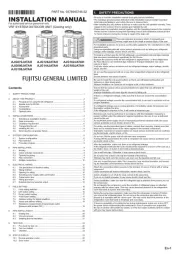
14 Mei 2025
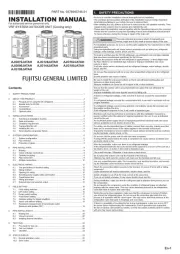
14 Mei 2025
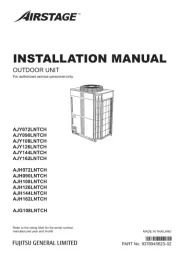
14 Mei 2025
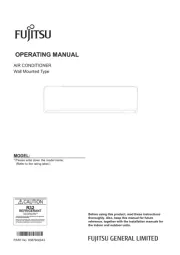
12 Mei 2025
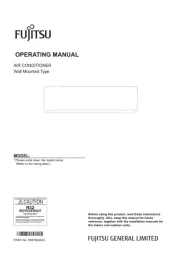
12 Mei 2025

3 April 2025

29 Maart 2025

24 Februari 2025

24 Februari 2025
Handleiding Airco
- Clatronic
- Wilfa
- Companion
- Maxicool
- Philco
- Columbia Vac
- Kaden
- Tarrington House
- Equator
- Solight
- Mabe
- H.Koenig
- Gutfels
- Corberó
- DCG
Nieuwste handleidingen voor Airco
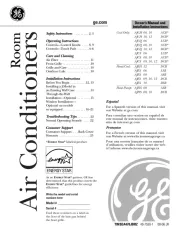
9 September 2025
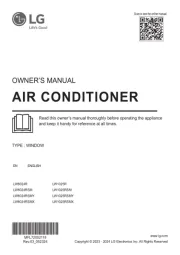
8 September 2025
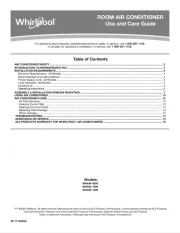
8 September 2025
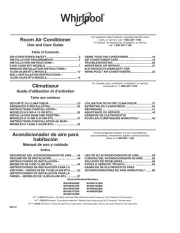
8 September 2025
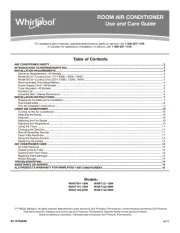
8 September 2025
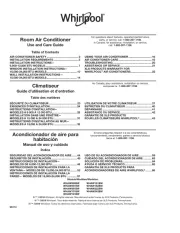
8 September 2025
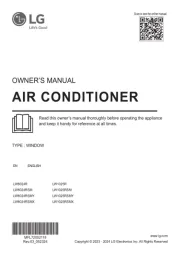
8 September 2025
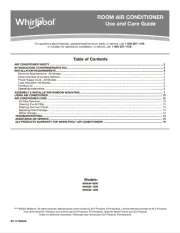
8 September 2025
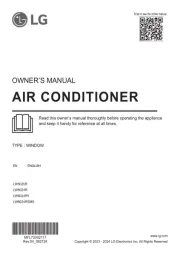
8 September 2025
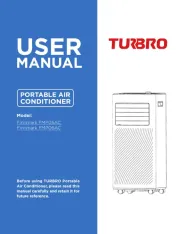
8 September 2025